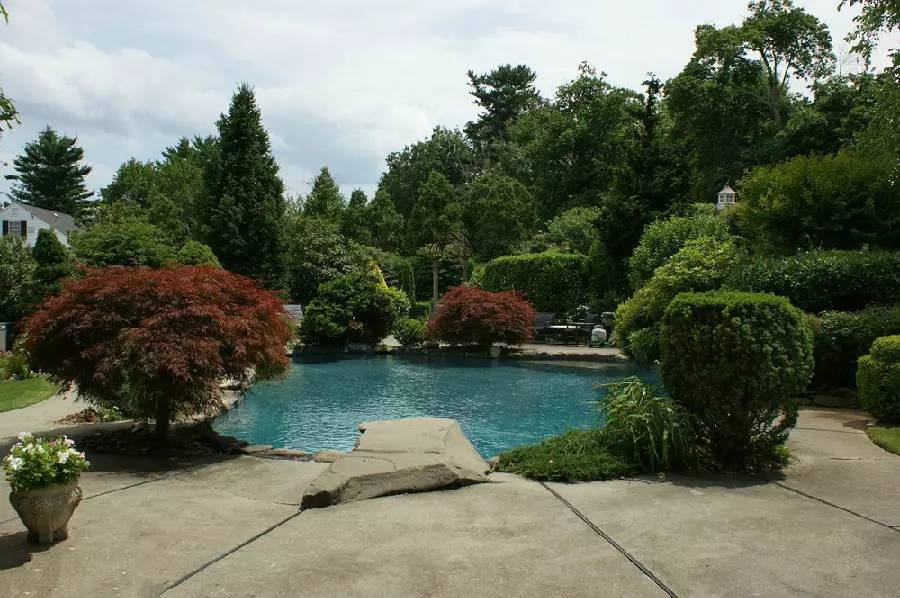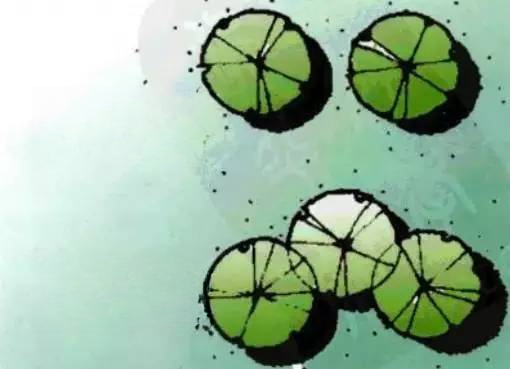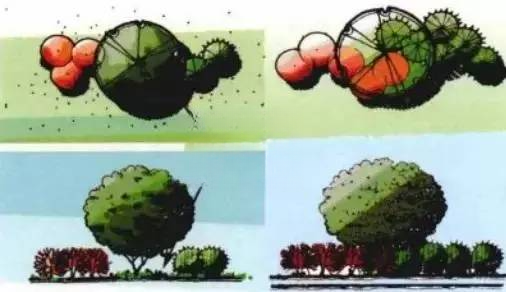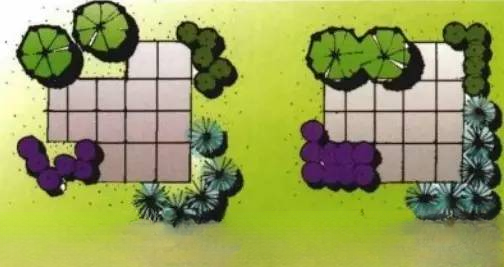Landscape design principles for single and group plants

Landscape design principles for single plants
When arranging individual plants, we should follow the following points:
1. Plant maturity
The maturity of individual plants in a group should be between 75% and 100%. Landscape architects design based on the mature appearance of plants, rather than limiting their design to the seedlings in front of them. Of course, the use of this method does cause trouble to the landscape in the early stages of garden construction. The correct planting method is that young trees should be separated from each other so that they have space between them after maturity. Therefore, every designer should see this early visual irregularity in a layout and realize that over time, the gaps between individual plants will shrink and eventually disappear. However, once the design matures, there should be no gaps.
2. Plant arrangement
When arranging individual plants in a group, there should be a slight overlap between them. For the sake of visual unity, the overlapping surface of individual plants is basically 1/4-1/3 of the diameter of each plant (Figure 1). As mentioned earlier, when the plants first appear in a group, the layout will appear more unified. However, when they appear in the form of a combination of individual plants, the planting layout will appear very disordered. A plant layout with too many individual plants is called a "scattered layout."

. 3. Principles for arranging individual plants.
Plants are grouped in odd numbers, such as 3, 5, 7, etc. The number of plants in each group should not be too large (Figure 2). This is a basic design principle. The reason why odd numbers can produce a unified layout is that the various components complement each other. On the contrary, even numbers are easy to divide and thus oppose each other: if three plants are grouped together, people's eyes will not stay on any single plant, but will appreciate it as a whole.

If two plants are grouped together, the line of sight will inevitably move back and forth between the two, because it is difficult to keep the line of sight on a single plant. In addition, there is another disadvantage of even-numbered arrangement, that is, this method often requires the plants in a group to be unified in size, shape, color and texture to maintain the consistency and balance of the crown width. In this way, when the designer considers using larger plants, it is more difficult to make them consistent in size and shape. In addition, if a plant in an even-numbered combination dies, it is even more difficult to replace it with a new plant that is exactly the same as it. The above points about the number of plants to be arranged in a group are particularly effective when we are dealing with 7 plants or less. It is difficult for the human eye to distinguish between odd and even numbers when the number exceeds this.
Landscape design principles for group plants
At this stage, the same principles for group arrangement of individual plants apply. Groups of plants should be visually connected to each other as should the individual plants in a group. Gaps or "waste spaces" (Figure 1) between groups of plants should be completely eliminated because they are not only unpleasant to the eye, but also create a messy appearance and are very likely to cause maintenance difficulties. In some layouts, it is not effective to have only slight overlaps between groups of plants. Instead, the design prefers more overlap between plants and mutual penetration to increase the interface between plant groups (Figure 2). This approach will undoubtedly increase the integrity and cohesion of a layout because the different groups of plants seem to be tightly intertwined and difficult to separate. In this way, when low plants are placed in front of taller plants, or when they mysteriously disappear behind a group of taller plants, the height relationship between different plants will add charm to the layout.


When considering the gaps and relative heights between plants, designers must not ignore the space under the tree canopy. Do not assume that the tree canopy observed on the plane extends downward to the ground, and therefore do not plant other low plants on the plane edge of the tree canopy.
This will undoubtedly form a waste space under the tree canopy, destroying the fluidity and coherence of the design (Figure 3). This waste space will also bring difficulties to maintenance (unless it is covered by ground cover), because it is very easy to cause trouble when passing through it. In order to solve this problem, some lower plants should be planted under the tree canopy. Of course, deliberately forming a useful space here is another matter.

The combination and arrangement of plants in the design should be coordinated with other factors and forms in addition to the other plants in the layout. The planting design should take into account the terrain, buildings, fences, various paving materials and open lawns. If designed properly, the plants will enhance their shapes and contours to complete these elements (Figure 4). For example, generally speaking (but not necessarily), the plants should complement the edges of the paving, so that when a paving material needs to be replaced, its original shape can be "recognized" by the surrounding plants. Therefore, the layout of the plants around the paving should be consistent with the form of the paving base, such as regular or free-style paving.

